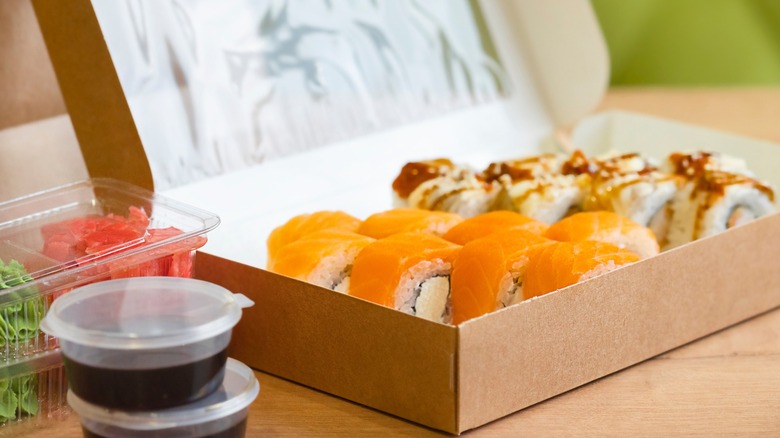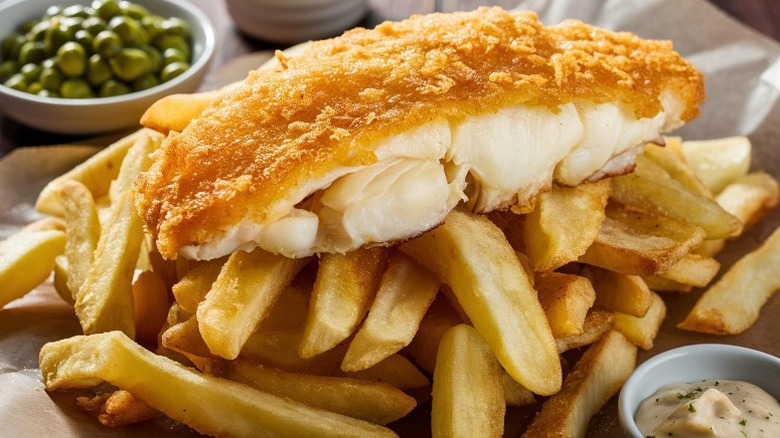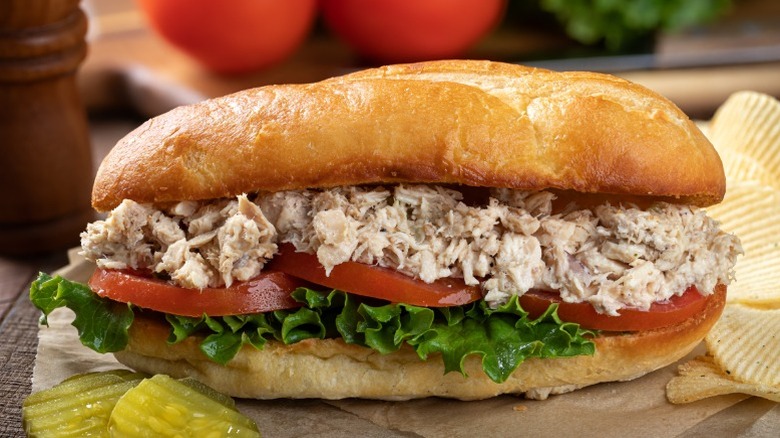The Seafood Dishes To Avoid Ordering For Delivery And What You Should Order Instead
There are some foods you just shouldn't order for delivery, and seafood is one that doesn't always hit the same when a driver brings it to your door, both for flavor and safety reasons. Assuming you're ordering it from a restaurant you trust, it still may take anywhere from 30 minutes to an hour to get the food, and you're relying on the fact that the delivery person's insulated bag keeps your food stored at the right temperature. The bacteria you're looking to avoid grow pretty quickly at temperatures between 40 and 140 degrees Fahrenheit. You've got about two hours before it needs to be in the fridge — and you can make that one hour if the outside temperature is over 90 degrees Fahrenheit. That may not give you much time to eat by the time your food arrives.
Given that seafood can be pricier, you might be better off saving your money unless you're ordering from a nearby restaurant. Plus, "safe to consume" isn't the same as "wonderful to taste," so you also need to think carefully about what type of seafood you order. In general, when it comes to seafood, you want to avoid anything served hot. Cold food is generally safe, assuming it's cooked properly. But it largely depends on your circumstances and what quality issues you're willing to put up with.
Hot seafood won't make the voyage
Foods cooked in piping-hot oil, such as fried cod or catfish and crab cakes, are safer options than delicate bites like caviar that spoil quickly at room temperature. But the fish's crispy breading can get soggy if it sits in the car for too long, especially enclosed in a Styrofoam container. But if you're willing to toss it into the air fryer for a couple of minutes and overcooking the fish is a risk you're willing to take, that's always an option, especially if the restaurant vents the container.
Speaking of containers, those are typically designed to keep food warm, which can be a double-edged sword. For example, salmon is prone to overcooking via residual heat, and it can get that weird rubbery texture if it sits steaming in a container immediately after cooking.
Cold, cooked seafood is your best bet
Raw seafood dishes are often cold, but they require expert handling and preparation by trained professionals. Ceviche, sushi, and poke bowls are sensitive to contamination. You want to be able to look into the restaurant's credibility, which can be tricky on a delivery app. Plus, if they end up in the insulated bag, that can speed up their journey into the temperature danger zone. Only order these from a kitchen you can vet, and only eat them when you can sit in the dining room.
Delivery also isn't the time to be adventurous. Avoid certain fish if you see it on the menu, such as lionfish and pufferfish, which are toxic sea creatures. In fact, it's probably a red flag if the restaurant offers them for delivery in the first place.
The best seafood dishes for delivery are deli-style items. Crab dip and tuna salad sandwiches are made with pre-cooked meat. They're mixed with ingredients like lemon juice and mayonnaise, so they can't sit forever, but they're far more likely to make it to your house in good shape. Soups like clam chowder, lobster bisque, and gumbo reach a boiling point and simmer for a while, meaning the restaurant has already accounted for the potential for overcooking. And if they get cold during transportation, you can easily reheat them in the microwave or on the stove without losing key flavors. Of course, some people might say it's best to avoid seafood altogether when ordering delivery, and that's a good option too.


